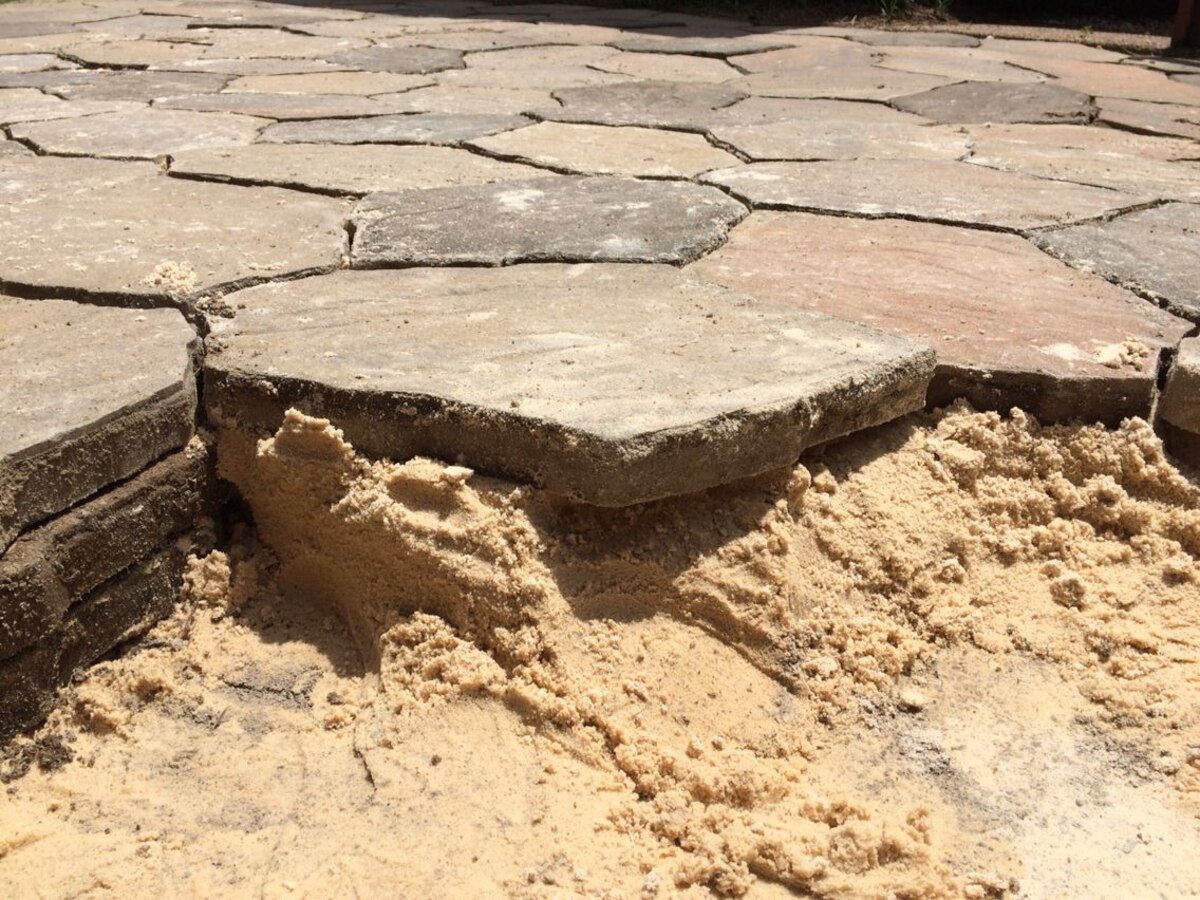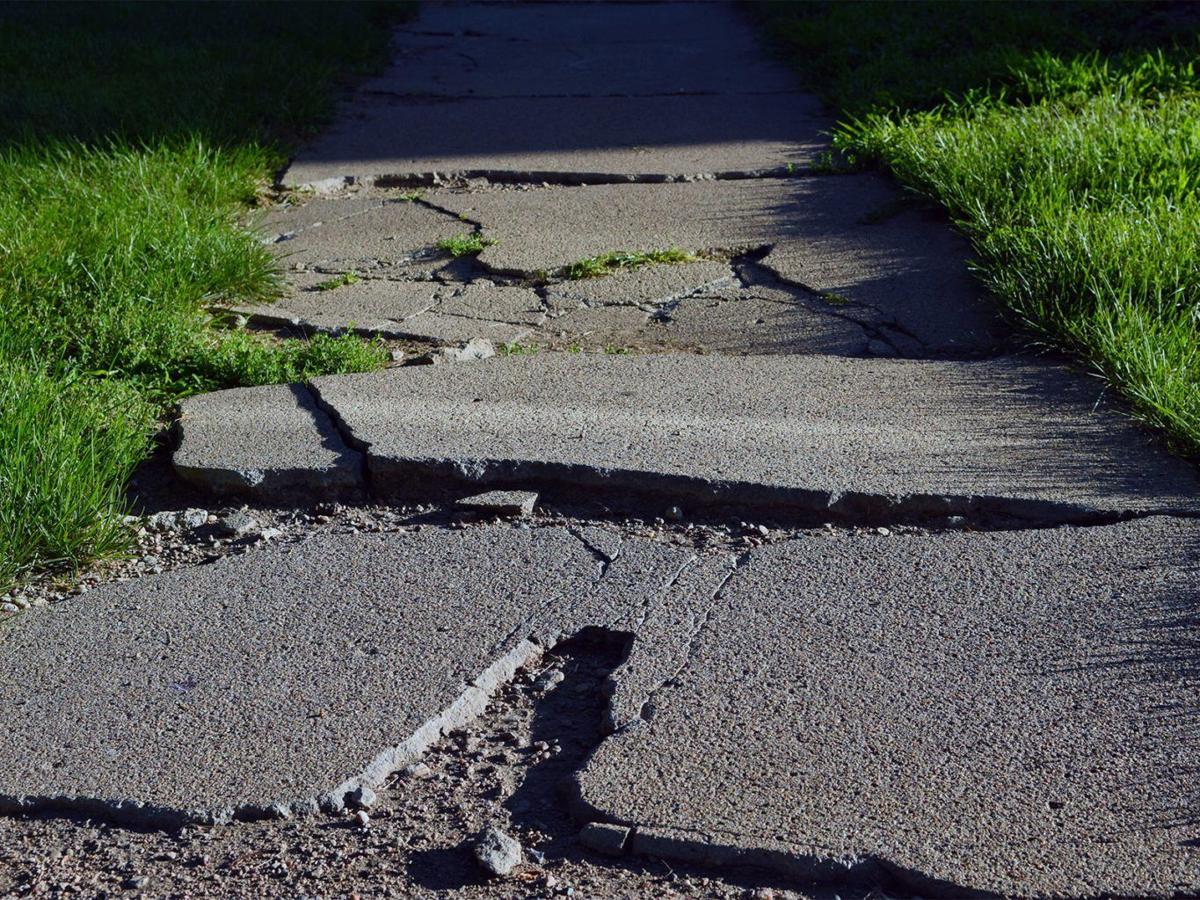Home>Gardening & Outdoor>Landscaping Ideas>How To Level Uneven Grass


Landscaping Ideas
How To Level Uneven Grass
Modified: August 27, 2024
Learn effective landscaping ideas for leveling uneven grass and creating a smooth, attractive lawn. Get expert tips and techniques for achieving a flawless outdoor space.
(Many of the links in this article redirect to a specific reviewed product. Your purchase of these products through affiliate links helps to generate commission for Storables.com, at no extra cost. Learn more)
Introduction
Welcome to the world of landscaping, where the beauty of nature meets the creativity of human hands. A well-maintained lawn not only enhances the aesthetic appeal of your property but also provides a tranquil space for relaxation and recreation. However, uneven grass can mar the visual appeal and functionality of your lawn, creating an uneven surface that is not only unsightly but also poses challenges for activities such as mowing and hosting outdoor gatherings.
Fortunately, the process of leveling uneven grass is a manageable task that can be accomplished with the right tools, materials, and techniques. In this comprehensive guide, we will explore the steps to achieve a smooth and level lawn, allowing you to reclaim the beauty and functionality of your outdoor space.
Key Takeaways:
- Leveling uneven grass requires assessing the problem, using tools like a garden rake and lawn roller, and following steps like filling low spots with topsoil and reseeding bare patches for a smooth, lush lawn.
- Maintaining a level lawn involves regular mowing, proper watering, addressing drainage issues, and proactive measures like aerating the soil and overseeding to prevent unevenness and promote healthy grass growth.
Read more: How To Level A Ladder On Uneven Ground
Assessing the Uneven Grass
Before embarking on the journey to level your uneven grass, it’s crucial to assess the extent of the unevenness and identify the underlying causes. Uneven grass can result from various factors, including soil settling, poor drainage, or the natural contours of the landscape. Conduct a thorough inspection of your lawn to pinpoint areas where the grass is uneven, taking note of any significant variations in elevation.
One effective method for assessing uneven grass is to visually inspect the lawn from different vantage points. Take a walk around the perimeter of your property and observe the lawn from various angles. Look for areas where the grass appears noticeably higher or lower than the surrounding terrain. Additionally, pay attention to any areas where water tends to accumulate after rainfall, as these may indicate drainage issues contributing to the unevenness.
Another valuable approach is to physically feel the unevenness by walking across the lawn and noting any areas that feel notably uneven underfoot. This tactile assessment can provide insights into the specific areas that require attention and help you prioritize the leveling process.
Furthermore, consider the potential causes of the uneven grass. Is the unevenness primarily due to soil settling, the presence of thatch, or the growth of uneven patches of grass? By understanding the underlying reasons for the unevenness, you can tailor your approach to effectively address the root causes and prevent future recurrence.
Once you have thoroughly assessed the uneven grass and identified the areas of concern, you will be well-equipped to proceed with the necessary steps to achieve a level and harmonious lawn.
Tools and Materials Needed
Preparing to level uneven grass requires the use of specific tools and materials to ensure a successful outcome. Here’s a comprehensive list of essential items you’ll need:
Tools:
- Garden Rake: A sturdy garden rake is indispensable for removing thatch, breaking up compacted soil, and leveling the ground surface.
- Lawn Roller: A lawn roller, whether manual or tow-behind, is essential for compacting the soil and smoothing out uneven areas.
- Shovel: A shovel is necessary for digging and moving soil, particularly when addressing low spots in the lawn.
- Wheelbarrow: A wheelbarrow facilitates the transport of soil, compost, and other materials across the lawn, streamlining the leveling process.
- Garden Hose: A garden hose with a spray attachment is useful for marking areas and outlining the boundaries for leveling.
- Landscaping Rake: A landscaping rake, also known as a grading rake, is instrumental in distributing soil evenly and creating a smooth, level surface.
- Measuring Tape: A measuring tape aids in assessing the depth of low spots and ensuring uniformity during the leveling process.
Materials:
- Topsoil: Quality topsoil is essential for filling in low areas and achieving a level surface across the lawn.
- Compost: Incorporating compost into the soil can improve its texture, enhance drainage, and promote healthy grass growth.
- Grass Seed: If leveling results in bare patches, grass seed will be needed to reseed these areas and encourage uniform grass coverage.
- Marker Flags: Marker flags or stakes can be used to demarcate areas that require leveling and serve as visual guides during the process.
- Lawn Fertilizer: Applying a balanced lawn fertilizer after leveling can promote healthy regrowth and contribute to a lush, uniform lawn.
By ensuring that you have the necessary tools and materials on hand, you can streamline the leveling process and achieve professional-quality results in rejuvenating your lawn.
Read more: How To Level A Toilet On An Uneven Floor
Steps to Level Uneven Grass
Leveling uneven grass involves a systematic approach to address the varying elevations and create a uniform surface across the lawn. Follow these comprehensive steps to achieve a level and visually appealing lawn:
1. Assess and Mark Uneven Areas:
Begin by identifying and marking the areas of uneven grass using marker flags or stakes. These visual markers will guide your efforts and help you prioritize the areas that require attention.
2. Remove Thatch and Debris:
Utilize a garden rake to remove thatch, debris, and any uneven patches of grass. Clearing the surface of the lawn prepares it for the leveling process and promotes better soil contact for new grass seed.
3. Fill Low Spots with Topsoil:
Address low spots by filling them with quality topsoil. Use a shovel to distribute the topsoil evenly, gradually building up the low areas to match the surrounding ground level.
4. Compact the Soil:
Use a lawn roller to compact the soil in the filled areas, ensuring a firm and level surface. This step promotes stability and prevents future settling of the soil.
5. Distribute Compost and Level the Surface:
Incorporate compost into the soil to enhance its quality and promote healthy grass growth. Use a landscaping rake to distribute the compost evenly and create a smooth, level surface across the lawn.
6. Reseed Bare Patches:
If leveling results in bare patches, sow grass seed in these areas to encourage regrowth and ensure uniform coverage. Lightly rake the soil to cover the seeds and water the newly seeded areas thoroughly.
7. Apply Lawn Fertilizer:
After leveling the lawn, apply a balanced lawn fertilizer to promote healthy regrowth and provide essential nutrients for the revitalized grass.
Read more: How To Level Grass
8. Water and Monitor:
Water the entire lawn thoroughly to facilitate the settling of soil and promote grass growth. Monitor the leveled areas closely, ensuring adequate moisture for optimal regrowth.
By following these steps diligently and with attention to detail, you can transform uneven grass into a level, lush lawn that enhances the beauty of your outdoor space.
Tips for Maintaining a Level Lawn
After successfully leveling your lawn, it’s essential to implement proactive measures to maintain its smooth and uniform appearance. Here are valuable tips for preserving a level lawn and preventing the recurrence of unevenness:
1. Regular Mowing Practices:
Adopt a consistent mowing routine, ensuring that the grass is maintained at an optimal height. Avoid cutting the grass too short, as this can stress the turf and contribute to uneven growth patterns.
2. Proper Watering Techniques:
Water the lawn deeply and infrequently to encourage deep root growth and overall resilience. Avoid overwatering, as it can lead to soil saturation and uneven settling.
Read more: How To Fix Uneven Stairs
3. Address Drainage Issues:
Assess the drainage patterns in your lawn and address any areas prone to water accumulation. Improving the overall drainage can prevent soil erosion and mitigate the formation of low spots.
4. Aerate the Soil:
Periodically aerate the lawn to alleviate soil compaction and promote better air and water penetration. This practice contributes to a healthier root system and uniform grass growth.
5. Monitor and Address Settling:
Regularly inspect the lawn for signs of soil settling or unevenness. Promptly address any emerging low spots by adding topsoil and compacting the soil to maintain a level surface.
6. Overseed as Needed:
If bare patches or thinning areas develop, overseed the lawn to encourage uniform grass coverage and prevent the proliferation of uneven patches.
Read more: How To Level A Concrete Patio
7. Conduct Soil Testing:
Periodic soil testing can provide valuable insights into the soil composition and nutrient levels, enabling you to adjust fertilization practices to promote healthy and uniform grass growth.
8. Implement Preventive Maintenance:
Proactively address any factors that may contribute to uneven grass, such as heavy foot traffic or the presence of thatch. By implementing preventive maintenance measures, you can uphold the level and pristine appearance of your lawn.
By integrating these tips into your lawn care regimen, you can sustain a level and visually appealing lawn that serves as a testament to your dedication to meticulous landscaping.
Conclusion
Transforming uneven grass into a level and inviting lawn is a gratifying endeavor that enhances the overall charm and functionality of your outdoor space. By assessing the unevenness, gathering the necessary tools and materials, and following a systematic approach to leveling, you can achieve remarkable results that elevate the beauty of your property.
Remember, the key to maintaining a level lawn lies in consistent care and proactive measures to prevent the reemergence of unevenness. By adhering to proper mowing, watering, and maintenance practices, you can preserve the smooth and uniform appearance of your lawn, ensuring that it remains a source of pride and tranquility.
As you embark on the journey to level your lawn, embrace the process as an opportunity to connect with nature and showcase your landscaping prowess. The satisfaction of witnessing a once-uneven lawn transform into a harmonious expanse of lush greenery is a testament to your dedication and vision for a captivating outdoor retreat.
Armed with the knowledge and insights provided in this guide, you are well-equipped to embark on the transformative journey of leveling uneven grass and nurturing a stunning, level lawn that beckons with its pristine beauty.
May your landscaping endeavors yield a picturesque and inviting outdoor haven, where the allure of a level lawn sets the stage for cherished moments and cherished memories.
Frequently Asked Questions about How To Level Uneven Grass
Was this page helpful?
At Storables.com, we guarantee accurate and reliable information. Our content, validated by Expert Board Contributors, is crafted following stringent Editorial Policies. We're committed to providing you with well-researched, expert-backed insights for all your informational needs.











0 thoughts on “How To Level Uneven Grass”